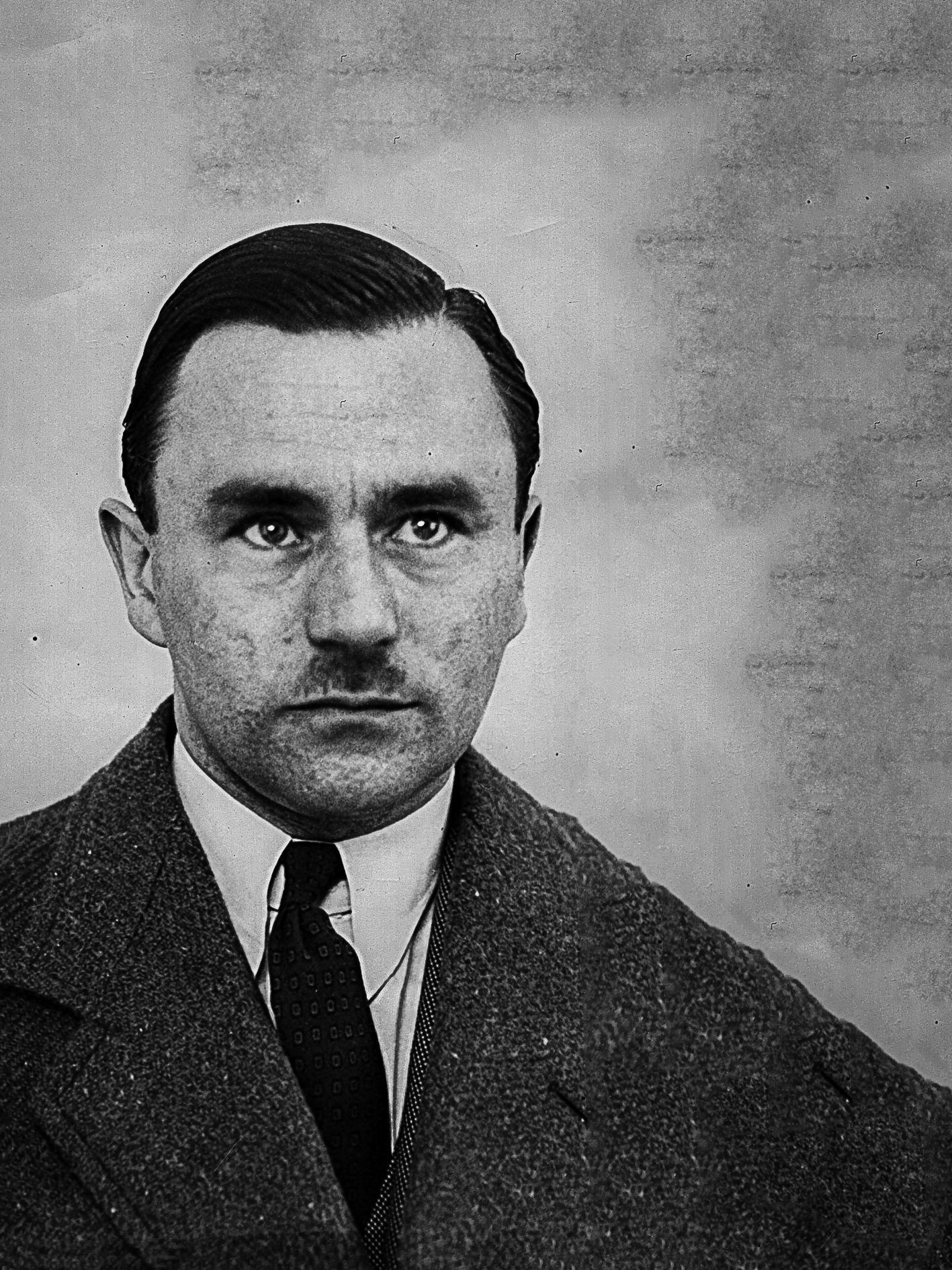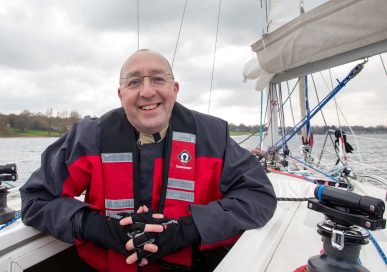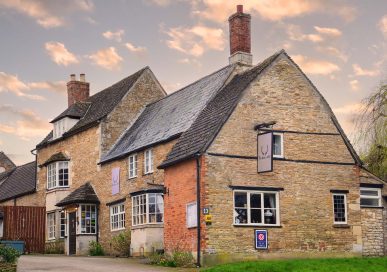Stamford’s Serial Killer
When you walk the streets of Stamford, it’s hard to believe that a serial killer once roamed the same routes. John George Haigh is one of the most famous serial killers in English history although not many are aware he originates from Stamford.Haigh was born in the town, living here for a while before moving and growing up in Outwood in the West Riding of Yorkshire. His parents were engineer John and Emily Robert, members of the Plymouth Brethren, a conservative Protestant sect.
Haigh later claimed that he suffered from recurring religious nightmares in his childhood. Despite these limitations, Haigh developed great proficiency at the piano, which he learned at home. He was fond of classical music and often enjoyed attending various concerts across the country featuring music by the likes of Felix Mendelssohn, Johann Sebastian Bach, Antonio Vivaldi, Tchaikovsky and many, many more.
It was because of this keen interest and talent that Haigh won a scholarship to Queen Elizabeth Grammar School, Wakefield. He then won another scholarship to Wakefield Cathedral, where he became a choirboy. After school, he was apprenticed to a firm of motor engineers. After a year, he left that job, and took jobs in insurance and advertising. At 21, he was fired after being suspected of stealing from a cash box.
In 1934, Haigh married 23 year old Beatrice ‘Betty’ Hamer. However, the marriage did not last long. The same year that Haigh was jailed for fraud, Betty gave birth while he was in prison. She gave the baby girl up for adoption and left Haigh. His conservative family ostracised Haigh once they heard the news about his situation. When he was released from prison, he moved to London in 1936, and became chauffeur to William McSwan, a wealthy owner of amusement arcades. He maintained McSwan’s amusement machines.
Thereafter he pretended to be a solicitor under the pseudonym William Cato Adamson with offices in Chancery Lane in London, Guildford in Surrey and Hastings, Sussex. He sold fraudulent stock shares, purportedly from the estates of his deceased clients, at below-market rates. His scam was soon uncovered by someone who noticed he had misspelled Guildford as ‘Guilford’ on his letterhead, an unlikely mistake from an educated solicitor.
Haigh received a four year prison sentence for fraud. Haigh was released just after the start of the WWII, continued as a fraudster, and was sentenced to several further terms of imprisonment. It was at this point in his criminal life, that Haigh realised that his repeated arrests stemmed from leaving victims alive to report the crime.
He became intrigued by the crimes of French murderer Georges-Alexandre Sarret, who in 1925 had disposed of his victims’ bodies via sulphuric acid. While in prison, Haigh devised a method of destruction of the body of a murder victim by dissolving it in the acid. He experimented with field mice and found that it took only 30 minutes for the body to dissolve.
Haigh was freed from prison in 1943 and became an accountant with an engineering firm. Soon after, by chance, he bumped into his former employer McSwan in The Goat pub in Kensington. McSwan introduced Haigh to his parents, Donald and Amy.
McSwan worked for them by collecting rents on their London properties, and Haigh became envious of his lifestyle. In 1944, McSwan disappeared. Haigh later admitted hitting him over the head after luring him into a basement at 79 Gloucester Road, London. He put McSwan’s body into a 40-gallon drum and tipped concentrated sulphuric acid onto it. Two days later he returned to find that the body had become sludge, which he poured down a manhole.
He told McSwan’s parents that their son had gone into hiding in Scotland to avoid being called up for military service. Haigh then took over McSwan’s house and began collecting the rents for his parents, but he wanted the money from the properties.
Donald and Amy became curious as to why their son had not returned as the war was coming to an end. In 1945, he lured them to Gloucester Road by telling them their son was back from Scotland for a surprise visit. He murdered them in his basement with blows to the head and disposed of them.
Haigh stole William McSwan’s pension cheques and sold their properties, stealing about £8,000, then moved into the Onslow Court Hotel in Kensington. Haigh was a gambler and was running short of money by the summer of 1947. To solve his financial troubles, he found another couple to kill and rob; Dr Archibald Henderson and his wife Rose, whom he murdered after feigning interest in a house that they were selling.
He was invited to the Hendersons’ flat by Rose to play the piano for their housewarming party. While at the flat Haigh stole Archibald Henderson’s revolver, planning to use it in his next crime. As the scale of his crimes became more and more serious, Haigh decided to rent a small workshop in Sussex and moved acid and drums there from Gloucester Road.
Haigh was also known to have stayed at Crawley’s George Hotel on several occasions. In 1948, he drove Henderson to Crawley on the pretext of showing him an invention. When they arrived, Haigh shot Henderson in the head with the stolen revolver. He then lured Mrs Henderson to the workshop, claiming that her husband had fallen ill, and shot her also.
After disposing of the Hendersons’ bodies in oil drums filled with acid, he forged a letter from them and sold all of their possessions for £8,000, except their dog and motor car, which he decided to keep.
Haigh’s next and last victim was Olive Durand-Deacon, a 69 year old wealthy widow of solicitor John Durand-Deacon and a fellow resident to Haigh at the Onslow Court Hotel. Haigh by then was calling himself an engineer, and Olive mentioned an idea to him that she had for artificial fingernails.
He invited her down to the Leopold Road workshop on in 1949 and, once inside, he shot her in the back of the neck with the revolver that he had stolen from Archibald Henderson.
He stripped Olive of her valuables, including a Persian lamb coat, and put her into the acid bath. This was to be Haigh’s last victim. Two days later, Durand-Deacon’s friend Constance Lane reported her missing. Detectives soon discovered Haigh’s record of theft and fraud and searched the workshop. Police found Haigh’s briefcase containing a dry cleaner’s receipt for Mrs. Durand-Deacon’s coat, and also papers referring to the Hendersons and McSwans.
The workshop in Sussex rented by Haigh did not contain a floor drain, unlike the workshop he had rented at Gloucester Road in London. He therefore disposed of the remains by pouring out the container on a rubble pile at the back of the property.
Investigation of the area by pathologist Keith Simpson revealed 28 pounds of human body fat, part of a human foot, human gallstones and part of a denture which was later identified by Mrs Durand-Deacon’s dentist during the trial. “Tell me, frankly, what are the chances of anybody being released from Broadmoor?” said Haigh during questioning with Detective Inspector Albert Webb. Broadmoor was a high security psychiatric hospital. The inspector said that he could not discuss that sort of thing.
“Well, if I told you the truth, you would not believe me,” Haigh replied. “It sounds too fantastic believe.” Haigh then went on to confess that he had killed Durand-Deacon, the McSwans and the Hendersons, as well as three other people; a young man called Max, a girl from Eastbourne, and a woman from Hammersmith. Unfortunately, these claims could not be substantiated.
After the arrest of John George Haigh based on his claims, he remained in custody in Cell 2 of Horsham Police Station in Barttelot Road. He was charged with murder at the nearby courthouse in what is now known as the Old Town Hall. However, Haigh decided to plead insanity, claiming that he had drunk the blood of his victims.
He confessed to having dreams dominated by blood as a young boy. When he was involved in a car accident in March 1944, his dream returned to him. “I saw before me a forest of crucifixes which gradually turned into trees. At first, there appeared to be dew or rain, dripping from the branches, but as I approached I realized it was blood,” said Haigh. “The whole forest began to writhe and the trees, dark and erect, to ooze blood. A man went from each tree catching the blood. When the cup was full, he approached me. Drink, he said, but I was unable to move.”
This is when the trial for John George Haigh, the acid bath murderer, began. His prosecution involved three key people; the Attorney General, Sir Hartley Shawcross, Sir David Maxwell Fyfe and Mr Justice Travers Humphreys.
The Attorney-General, Sir Hartley Shawcross, later known as Lord Shawcross, led for the prosecution at Lewes Assizes, and urged the jury to reject Haigh’s defence of insanity because he had acted with malice aforethought. Shawcross was a barrister and politician and the lead British prosecutor at the Nuremberg War Crimes tribunal. He would go up against Sir David Maxwell Fyfe, defending Haigh. Fyfe was also known as the Earl of Kilmuir. He was a politician, lawyer and judge who combined an industrious and precocious legal career with political ambitions that took him to the offices of Solicitor General, Attorney General, Home Secretary and Lord High Chancellor of Great Britain.
He called many witnesses to attest to Haigh’s mental state, including Dr Henry Yellowlees, who claimed Haigh had a paranoid constitution. “The absolute callous, cheerful, bland and almost friendly indifference of the accused to the crimes which he freely admits having committed is unique in my experience.”
However, in the end, it was all for nothing. It took only minutes for the jury to find Haigh guilty. Mr Justice Travers Humphreys sentenced him to death. Haigh lived out the short amount of time he had left in his condemned cell at Wandsworth Prison. Just prior to his execution, Haigh was asked if he wanted a brandy. “Make it a large one, old boy,” was his reply. Haigh was led to the gallows and hanged by executioner Albert Pierrepoint in 1949.
The case of John George Haigh was one of the post 1945 cases which gained considerable coverage in the newspapers even though Haigh’s guilt was never questioned. The editor of the Daily Mirror, Silvester Bolam, was sentenced to a prison term for contempt of court for describing Haigh as a ‘murderer’ while the trial was still under way. 






